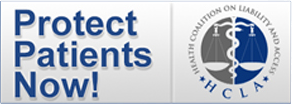Recent New York News
Insurers Pause to Take Pulse of Medical AI
Artificial intelligence and machine learning technologies may help reduce medical errors and improve patient outcomes, but their use in health care raises liability concerns and questions around medical malpractice risks. Insurers are not yet restricting...
Nikki Haley’s Good Healthcare Idea: Medical Malpractice Reform Can Help Reduce Costs
The Republican presidential candidates during last week’s debate offered few useful ideas to improve healthcare and lower costs. But credit to Nikki Haley for highlighting one: tort reform. Asked how to protect sick Americans from financial ruin, she mentioned the...
June 2023 Newsletter
HCLA Pushes for Good Samaritan legislation in pandemic preparedness reauthorization As legislative hearings and markups were underway in Washington, D.C., earlier this month, the HCLA announced its support for including the language contained in the Good Samaritan...
Current Medical Liability Laws
| Damage Caps | None |
| Joint Liability Reform | Yes. For noneconomic damages. Defendants are responsible only for their proportionate share of negligence if they are found to be 50% or less liable. Defendants can be held jointly and severally liable for economic damages. Cooney v. Osgood Machinery, 612 N.E.2d 277 (N.Y. 1993); Civil Practice Law & Rules Article 16 §§ 1600 — 1603. |
| Collateral Source Reform | Yes. Collateral sources of payment are admissible as evidence and must reduce the award by the amount recovered. Such reduction shall be offset by premiums paid by the claimant for the benefit for two years preceding the action and projected future costs of maintaining benefits. |
| Attorney Fees Limited | Yes. Fees are capped as follows: 30% of the first $250,000; 25% of the next $250,000; 20% of the next $500,000; 15% of the next $250,000; and 10% of fees of $1.25 million or more. N.Y. Judiciary. |
| Periodic Payments Permitted | Yes. Future damages over $250,000 must be paid periodically. Medical Malpractice. |
